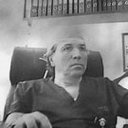Torticollis secondary to posterior fossa and cervical spinal cord tumors: report of five cases and literature review.
Märksõnad
Abstraktne
Torticollis is either congenital or acquired in childhood. Acquired torticollis is not a diagnosis but rather a sign of an underlying disorder. The causes of acquired torticollis include ligamentous, muscular, osseous, ocular, psychiatric, and neurologic disorders and may be a symptom of significant abnormalities of the spinal cord and brain, such as spinal syrinx or central nervous system neoplasia. Torticollis is rarely considered to be an initial clinical presentation of posterior fossa and cervical spinal cord tumors. We report five cases of pediatric tumors with torticollis at the onset: an astrocytoma originating from the medulla oblongata, another presumptive astrocytoma of the spinal cord located between C1 and C6 cervical vertebrae (not operated), an ependymoma located throughout the whole cervical spinal cord extending into the bulbomedullary junction, an astrocytoma originating from the bulbus and extending into the posterior fossa, and another case of a eosinophilic granuloma located extradurally through the anterior and posterior portions of the vertebral bodies from C3 to C7 producing the collapse of the sixth cervical vertebra. All five cases were seen in children, aged between 3 and 12 years. All these cases reflect the misinterpretation of this neurological sign and the lack of association with the possibility of spinal or posterior fossa tumor. This delay in the diagnosis of these diseases led to progressive neurological deterioration and to the increase in the tumor size, which made surgical intervention difficult and the prognosis unfavorable. Although torticollis secondary to tumors is rarely seen, it is necessary to be kept in mind in the differential diagnosis.



